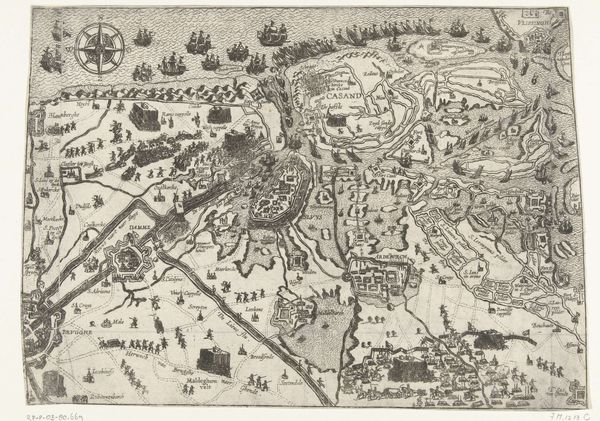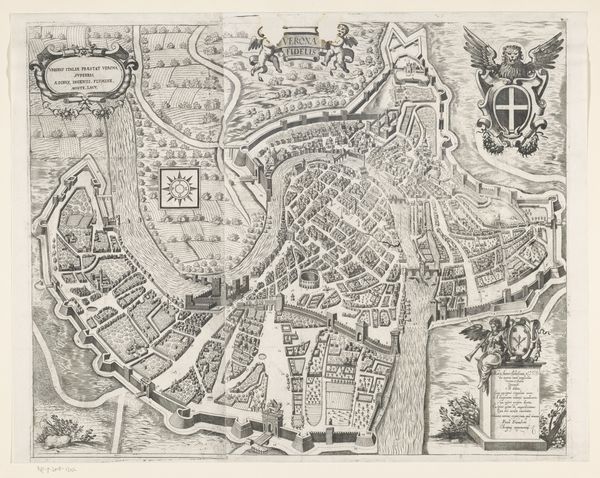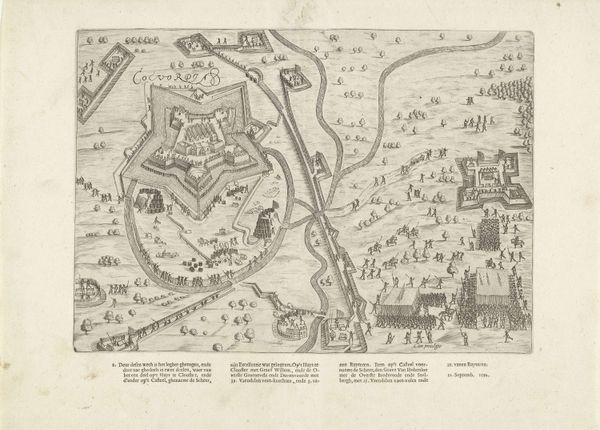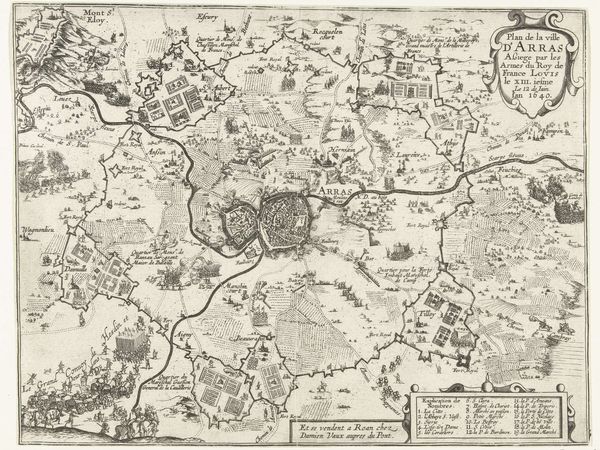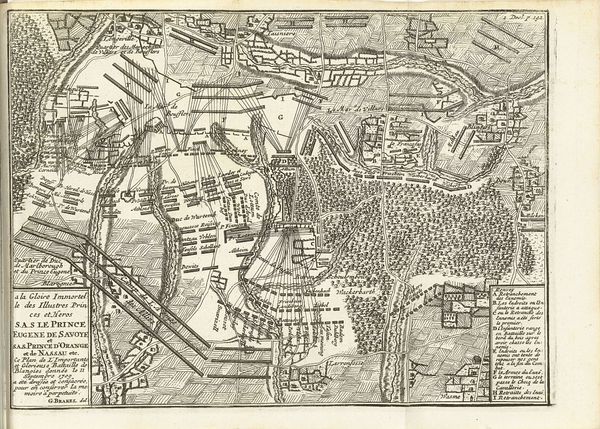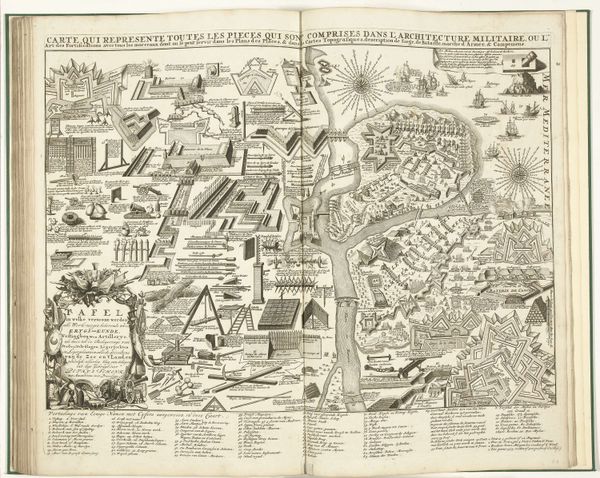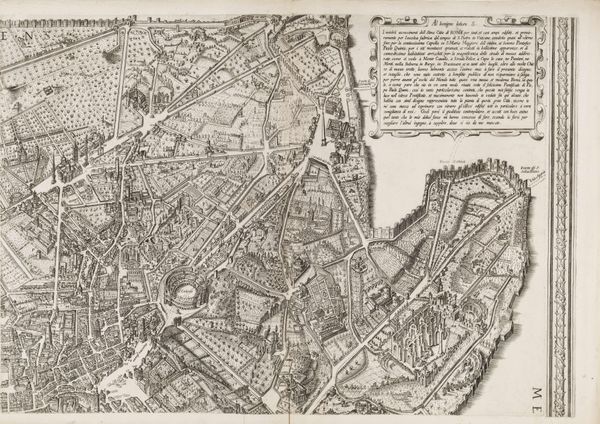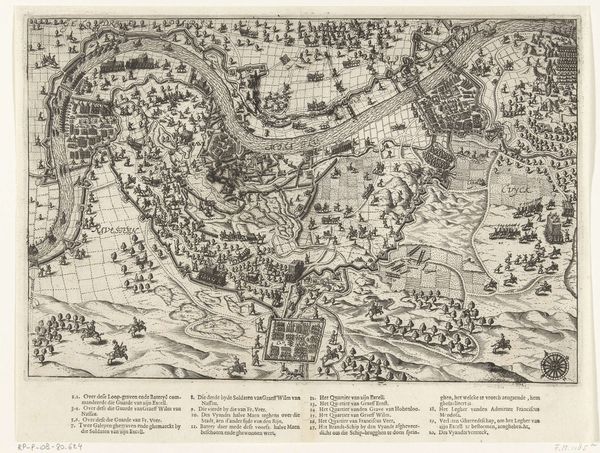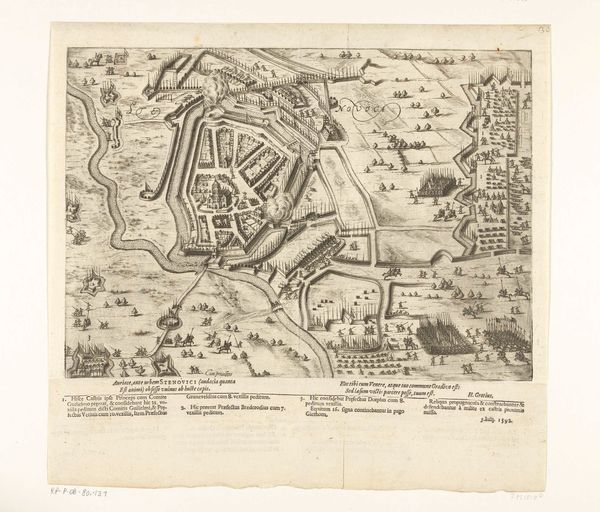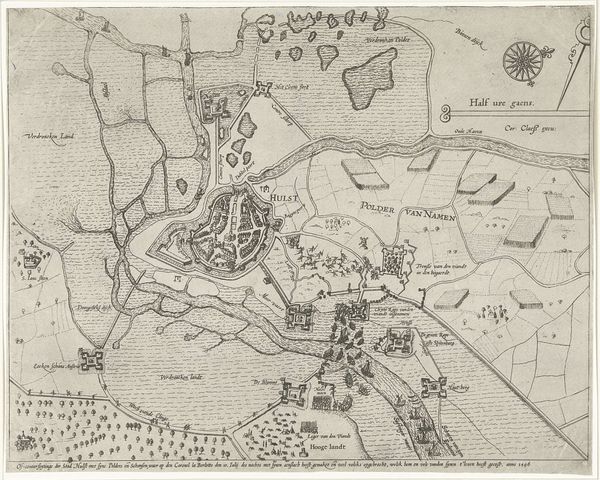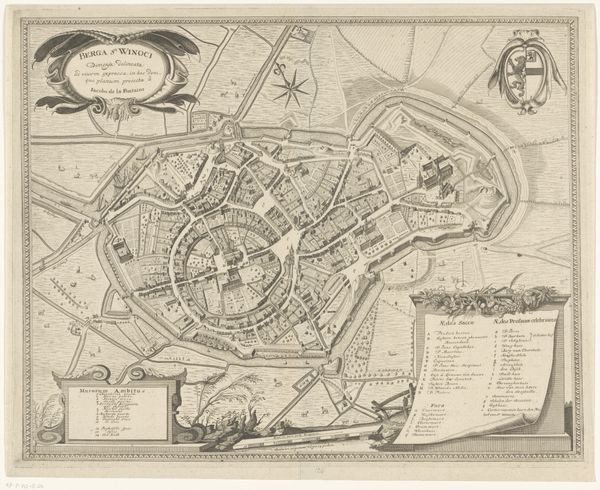
Speculum Romanae Magnificentiae: Plan of Ancient Rome 1530 - 1580
0:00
0:00
drawing, print, engraving
#
drawing
# print
#
ancient-mediterranean
#
cityscape
#
italian-renaissance
#
engraving
Dimensions: sheet: 15 9/16 x 21 1/16 in. (39.5 x 53.5 cm)
Copyright: Public Domain
This is Pirro Ligorio's "Plan of Ancient Rome," printed sometime in the 16th century. It's an engraving, meaning the design was incised into a metal plate, likely copper, and then printed onto paper. The process yields a sharp, precise image, perfect for architectural detail. The material of the print itself—paper and ink—also speaks to a moment of increasing literacy and the rise of print culture. Making an engraving like this was labor-intensive, demanding skill in both drawing and metalworking. Look closely, and you can see the careful, deliberate lines that create a sense of depth and texture. This wasn't just a technical exercise; it was a way of mapping knowledge, both literally and conceptually. Ligorio, as an antiquarian, was deeply invested in Rome's classical past. This map is a product of careful study, and reflects his effort to reconstruct the ancient city in the present. The "Plan of Ancient Rome," isn’t just a map; it's a testament to the power of skilled handwork, and to the cultural work of preservation.
Comments
No comments
Be the first to comment and join the conversation on the ultimate creative platform.
